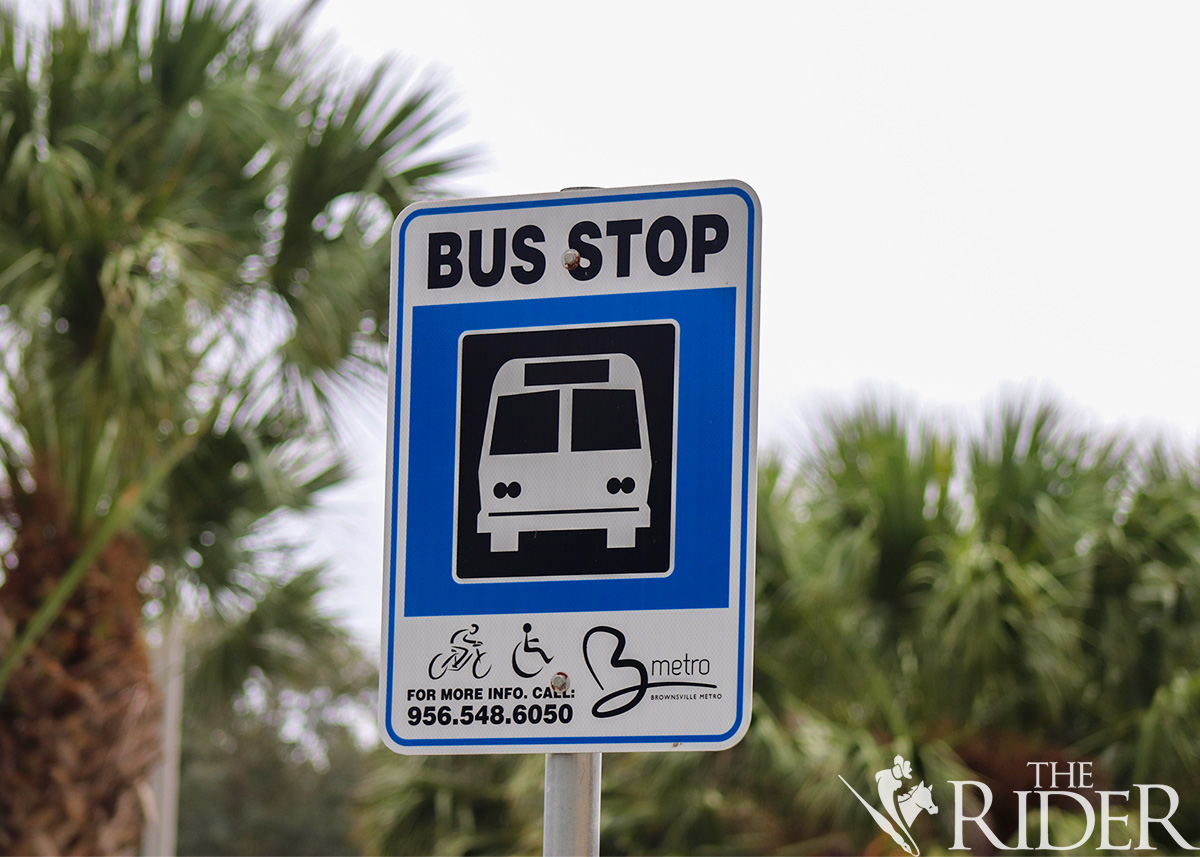The City of Brownsville is accepting bids for its $1.1 million Bus Stop Improvement Project until the end of this month.
Octavio Salazar, Brownsville Metro transit and mobility planner for multimodal transportation, said the city wants to make the shelters a safe place for the public to wait for the bus.
“It takes a while for the bus to go around,” Salazar said. “So, we want to have this program or the sites ready to go [for the public].”
He said that for Fiscal Year 2023, which ended on Sept. 30, Brownsville Metro tallied a total ridership of 1,146,418, which includes fixed route (bus routes that run throughout the city) and paratransit (complimentary curb-to-curb service for residents with disabilities). The fixed route ridership totaled 1,123,018 passengers.
Crystal Ortiz, a Texas Southmost College architecture sophomore, said “there needs to be more stops around the city.”
“We have to wait sometimes, like, half an hour or an hour,” Ortiz said. “We need more buses.”
Bus stop shelters will improve safety, protect riders from the elements and enhance comfort and aesthetics, according to the city’s website.
The website states a “$1.1 million budget was allocated from the general fund to purchase and install the bus shelters needed for the 32 bus stops.”
Gennie Garcia, Brownsville Metro deputy director for multimodal transportation, said it has been the biggest budget allocated for the bus amenities.
“All the budget is fully allocated for improvements to the bus stops,” Garcia said.
She said when the project was funded “we were really excited.”
The Rider asked how much each shelter will cost.
Garcia replied the average amount per bus stop is $24,000 to $26,000.
“That includes the shelter, the construction and the engineering cost that we had to design,” she said.
The city received many bids for the construction of the shelters.
“Shelters can average from $11,000 to $20,000,” Garcia said. “We actually got one of the lowest cost.”
The Rider asked UTRGV students who use city transportation about the bus stops.
Yuliana Martinez, a nutritional science sophomore, said there should be more places to sit and with shade.
“They should add more areas where to walk,” Martinez said. “There’s nowhere to go. There is no sidewalk.”
All 32 bus stops will have changes and additions to them.
“Pretty much, it’s going to be the shelter itself,” Salazar said. “If it needs a sidewalk, we’ll go out and install a sidewalk.”
The bus shelters will include benches, USB-charging ports and solar lighting, Garcia said.
“But the biggest highlight is the actual shelter,” she said.
The estimated time to make the improvements at the 32 bus stops is 120 days.
“Hopefully everything goes smoothly and there’s no hiccups or anything, but 120 days,” Salazar said.
There is no set date on the start of the project but it will take place in Fiscal Year 2024, Garcia said.
“We’re working diligently and as quickly as we can to try to get this out,” she said about the project. “We’re very dedicated and committed.”










